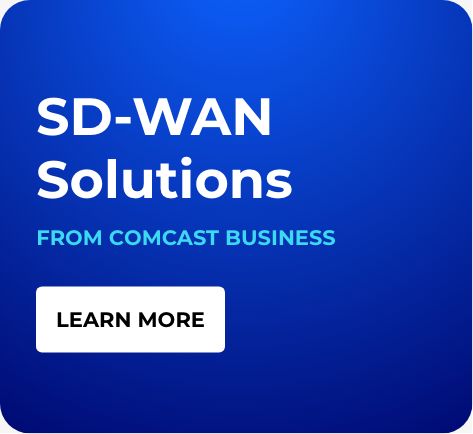Connected Experiences, Accelerated: Charting the Future of CX and EX

We have reached a new stage in the evolution of digital experience.
After years of hybrid work, cross-channel integration and engagement, and the blending of in-person and virtual experiences, consumers and employees have a simple expectation: That every digital interaction—no matter where it takes place or with what application, process, or person—feels seamless and connected.
And while changing customer and employee expectations are natural outflows to years of fast-paced innovation in customer experience (CX) and employee experience (EX), we’re not yet approaching any kind of stasis. Continually evolving expectations have driven a universal demand for connected digital experiences, although many enterprise organizations may not be equipped to deliver because of outdated networking and connectivity infrastructures.
That means IT leaders are dramatically changing the ways in which they approach wide-area networking, last-mile connectivity, application performance, and network security.
Let’s dive into the new state of connected experience:
Customer experience
Customers expect to derive greater value, heightened experiences, and more control over the ecosystems they engage with. Above all, they expect to utilize tools and services that feel personalized and frictionless.
That means transactional, one-off interactions no longer cut it. Leading organizations are instead focusing on building self-propelled digital environments around their brands, fostering loyalty through connected, enveloping experiences across channels and touchpoints.
The bad news? In many cases, brands aren’t keeping up with expectations. In 2022, customer experience quality fell for a full 19% of brands, with the number of companies that consider themselves “customer-obsessed”—putting CX at the center of strategy—dropped from 10% to 3% year over year.
The good news? Any drops in customer experience from a market perspective open new windows to opportunity and differentiation among a class of consumers that craves more from brands than what they’re getting.
On the ground, this means that organizations can and should tap into a strong technology foundation to enable next-generation CX use cases, like:
Transformed in-store retail experiences that blend the lines between the physical and the digital, connecting digital signage, new payment methods, personal devices, and personalized, in-the-moment offers—underpinned by real-time analytics, digital supply chain management, and IoT to reshape backend operations and eliminate gaps.
Modernized and personalized QSR interactions, with heavily utilized apps to order and track food, line-busting technology via added lanes and tablet-equipped employees to reduce drive-thru queues, and gamification programs that not only personalize experiences and reward customer loyalty, but also leverage data to further feed marketing optimization.
Connected, contactless, and smart hotel stays that put personalization first from check-in to check-out, leverage robust in-room entertainment to give guests all the trappings and comfort of home, and use IoT technology to help keep items stocked and rooms clean.
Employee experience
Changing work models have completely reshaped employee experience, and that evolution is still ongoing. Work-from-anywhere has become the norm for many businesses, and a new push to bring equitable flexibility to frontline workers will see organizations that have kept employees on-site for the last few years offering new enhancements to employee experience.
Moving forward and facing stressors like economic fluctuation, supply chain uncertainty, and labor shortages, organizations will be making strategic technology spending decisions that drive optimal, connected employee experiences and operational efficiency—keys to building and maintaining a strong, satisfied workforce. Existing and emerging employee experience use cases include:
Personalization: The proliferation of applications and programs used by employees over the last few years has been rapid, but now personalization is also taking its place in the tech stack. As employees expect personalized content and notifications, employers will need to lean more on orchestration and segmentation that follows employees across settings.
A changing network edge: The modern network edge is in a state of constant flux. Users and devices are decentralized and mobile, working from anywhere. The new network edge can be anywhere—a branch or campus, the home of a remote worker, or an IoT-connected device in the field.
Hyperconnected workplaces: By 2026, 40% of enterprises will double investments in hyperconnected digital spaces to increase productivity, improve collaboration, and boost energy efficiency.
The path forward for enterprise: Future-ready network connectivity
For many organizations, there’s still work to be done in setting the right technology foundation to enable the types of connected customer and employee experiences that are now expected. In fact, 81% of organizations are still prioritizing connectivity programs. Organizations are still determining their path to agility and connected experiences, but are moving to embrace 5G, edge, and cloud infrastructure and services to keep data moving. By 2026, 40% of companies will lag in executing a resilient connectivity strategy due to budget shortfalls, as workplace transformation becomes the new normal for customers, employers, and partners.
So for business and technology leaders, it’s imperative to not only adjust to current market demands, but also lay the groundwork for what’s to come. The connected employee and customer experiences of the future will exist on top of future-ready network connectivity. In practice, that comes down to a few key elements:
Fast and reliable connectivity: Effective experience hinges on the fact that no matter the device, no matter the touchpoint, no matter the application, no matter the location—data gets to where it needs to be in real time. That means that reliable Internet connectivity is a prerequisite for success.
Agile networks: Multi-transport, application-aware, and software-enabled networks—supported by comprehensive managed network services—optimize performance and responsiveness, enabling real-time responsiveness and rapid evolution to support better CX and EX.
Cloud-based solutions and multi-cloud connectivity: Multicloud adoption has accelerated as enterprises seek agility, operational efficiency, and cost savings. At the same time, the agility it enables is instrumental in maintaining control over dynamic network edge environments.
Integrated networking and security: As security threats evolve and cybersecurity remains a boardroom-level concern across enterprise, IT leaders seek full-spectrum support and services to help protect critical business and customer data.
Connected digital experiences have become essential to enterprise businesses, both to drive better customer experiences and support evolving employee work models. Powering these experiences at scale requires future-ready networking that is fast, reliable, and agile, with security solutions. Comcast Business can help. Find out how.
Understand the latest CX and EX drivers for networking and connectivity.
Locked Content
Click on the button below to get access
Unlock NowOr sign in to access all content on Comcast Business Community
Resource Center
Learn how Comcast Business can help
keep you ready for what's next.











